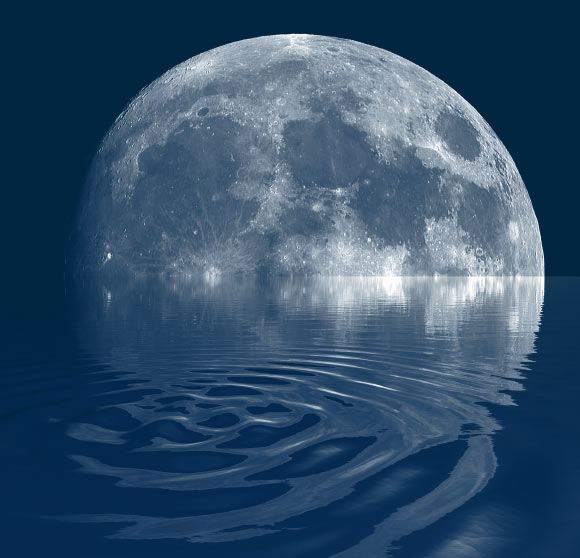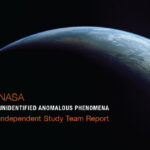Planetary scientists from the University of Hawaii and elsewhere suggest that although they have confirmed the importance of the solar wind as a major source of water production on the Moon, previously unknown properties of Earth’s plasma sheet may also play an important role.
Li et al. report abundance observations of lunar surficial water on the nearside at different stages during the Moon’s passage through Earth’s magnetotail. Image credit: NASA’s Goddard Space Flight Center.
Due to Earth’s magnetism, there is a force field surrounding the planet, referred to as the magnetosphere, that protects Earth from space weathering and damaging radiation from the Sun.
Solar wind pushes the magnetosphere and reshapes it, making a long tail on the night side.
The plasma sheet within this magnetotail is a region consisting of high energy electrons and ions that may be sourced from Earth and the solar wind.
Previously, planetary scientists mostly focused on the role of high energy ions on the space weathering of the Moon and other airless bodies.
Solar wind, which is composed of high energy particles such as protons, bombards the lunar surface and is thought to be one of the primary ways in which water has been formed on the Moon.
Building on their previous work that showed oxygen in Earth’s magnetotail is rusting iron in the Moon’s polar regions, University of Hawaii researcher Shuai Li and colleagues were interested in investigating the changes in surface weathering as the Moon passes through Earth’s magnetotail, an area that almost completely shields the Moon from solar wind but not the Sun’s light photons.
“This provides a natural laboratory for studying the formation processes of lunar surface water,” Dr. Li said.
“When the Moon is outside of the magnetotail, the lunar surface is bombarded with solar wind.”
“Inside the magnetotail, there are almost no solar wind protons and water formation was expected to drop to nearly zero.”
In their new study, the authors analyzed the remote sensing data that were collected by the Moon Mineralogy Mapper instrument onboard India’s Chandrayaan-1 mission between 2008 and 2009.
Specifically, they assessed the changes in water formation as the Moon traversed through Earth’s magnetotail, which includes the plasma sheet.
“To my surprise, the remote sensing observations showed that the water formation in Earth’s magnetotail is almost identical to the time when the Moon was outside of the Earth’s magnetotail,” Dr. Li said.
“This indicates that, in the magnetotail, there may be additional formation processes or new sources of water not directly associated with the implantation of solar wind protons.”
“In particular, radiation by high energy electrons exhibits similar effects as the solar wind protons.”
“Altogether, this finding and my previous findings of rusty lunar poles indicate that the mother Earth is strongly tied with its Moon in many unrecognized aspects.”
The paper was published this month in the journal Nature Astronomy.
_____
S. Li et al. Formation of lunar surface water associated with high-energy electrons in Earth’s magnetotail. Nat Astron, published September 14, 2023; doi: 10.1038/s41550-023-02081-y




